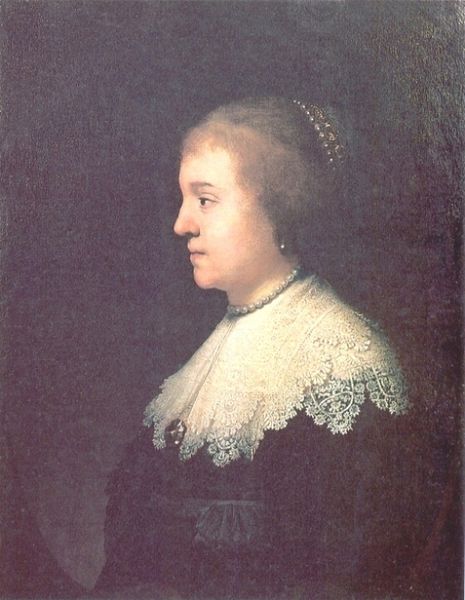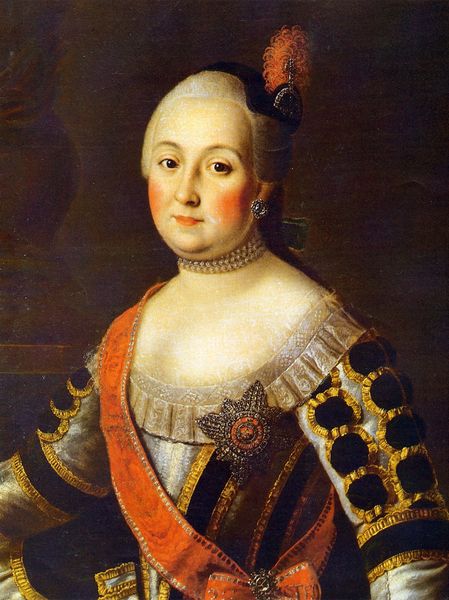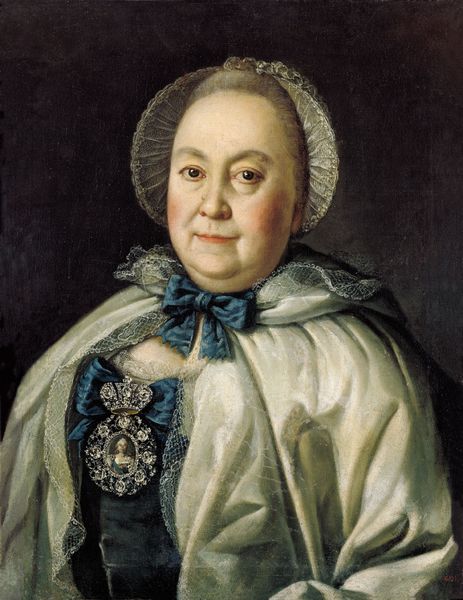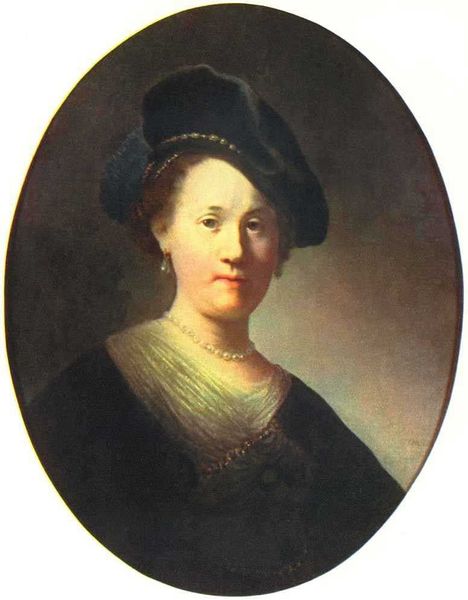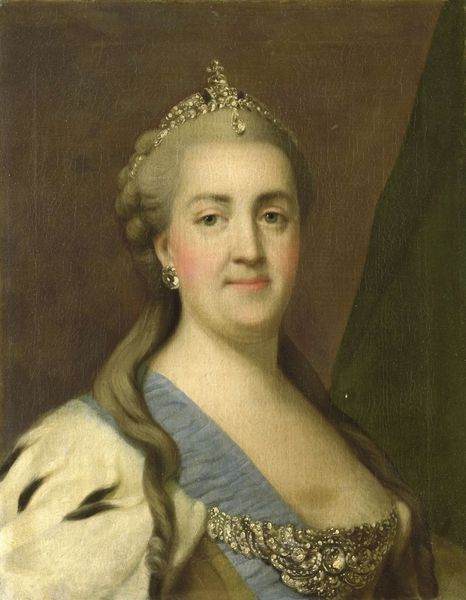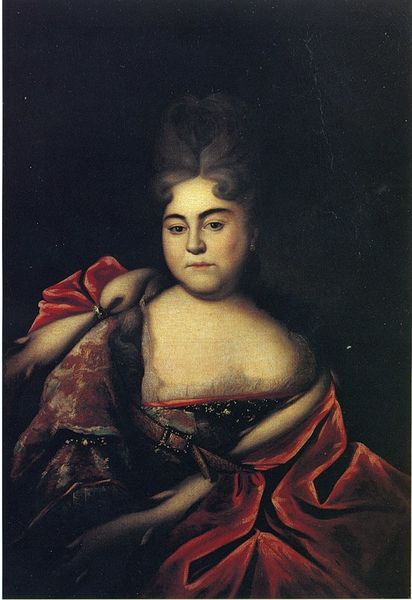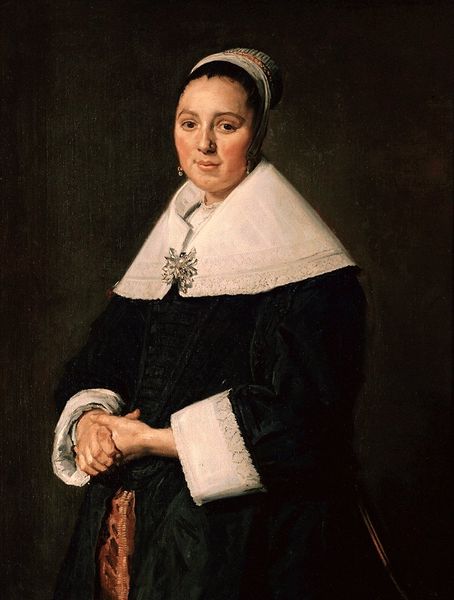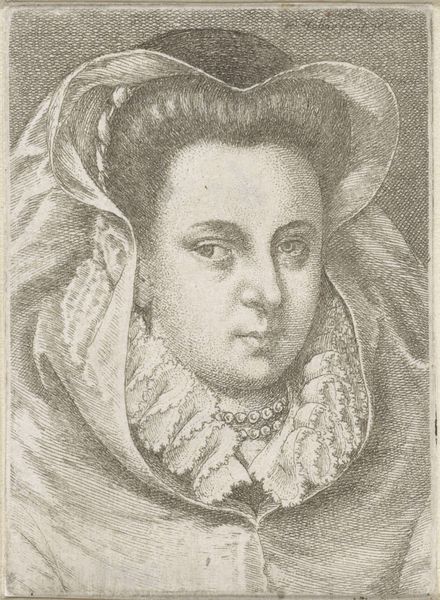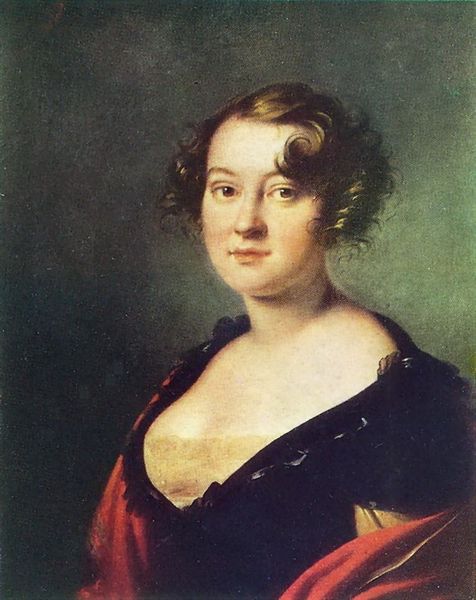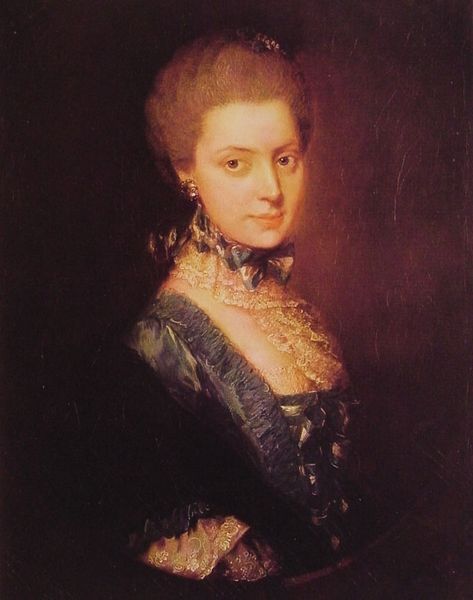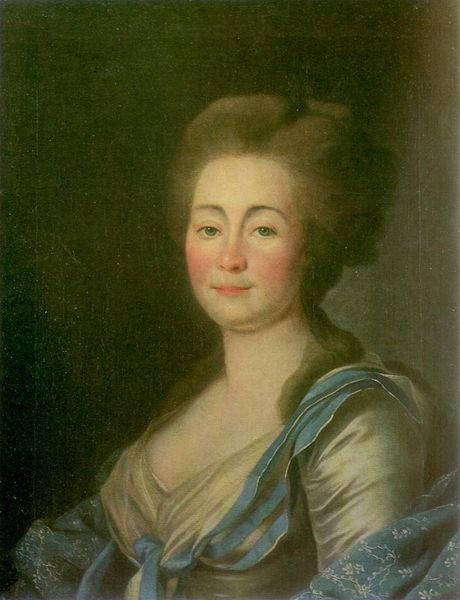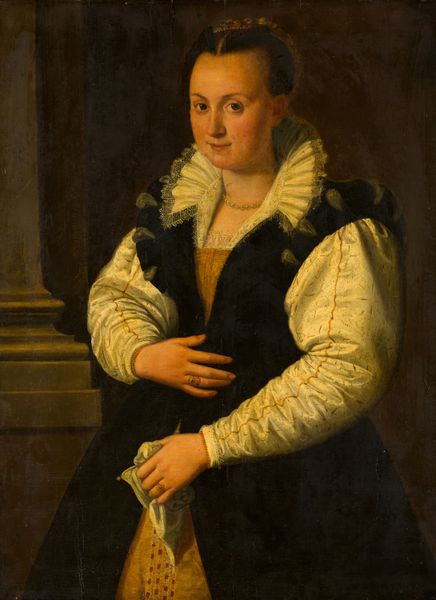
painting, oil-paint
#
portrait
#
baroque
#
painting
#
oil-paint
#
history-painting
#
lady
#
female-portraits
#
rococo
Copyright: Public domain
Editor: This is Aleksey Antropov’s "Portrait of a Mistress Agrippina Leontyevna Apraksina," an oil painting. There's an interesting weightiness about her, not just physically but in the presence she seems to hold despite the rather subdued coloring. How do we interpret this presentation of a woman in what seems to be a position of power in 18th century Russia? Curator: The "weightiness" you perceive is crucial. These portraits weren't merely aesthetic exercises; they were potent signifiers of power and social status, constructed within a highly stratified society. Consider how gender intersects with class here. Editor: Right. The subject’s gaze seems to convey both confidence and a hint of weariness. Is this a reflection on the artist's perception, or commentary of the sitter herself? Curator: The gaze, in this context, becomes a contested space. Is Antropov, as a male artist in a patriarchal society, complicit in objectifying her, or is he providing a nuanced representation that acknowledges the constraints she navigated? Also, what's her role in deciding how to present herself? These were conscious decisions within societal confines. Editor: So, is it a portrait of power, or a portrait about the performance of power? I am keen to see how one can further interpret elements within it, such as the Rococo or Baroque elements. Curator: Exactly! It is crucial to analyze both form and content. Look at the lavish, Baroque and Rococo styles combined and consider how it intersects with the sitter's positioning within a powerful court, a court actively engaged in solidifying its cultural influence. What does that ornate medal around her shoulder represent, not just aesthetically but politically? Editor: It’s fascinating to think about how something seemingly straightforward, like a portrait, can reveal so much about the complex intersections of gender, class, and power dynamics of the time. Curator: Precisely. By examining art through an intersectional lens, we gain a richer understanding of both the artwork and the historical context in which it was produced.
Comments
No comments
Be the first to comment and join the conversation on the ultimate creative platform.
